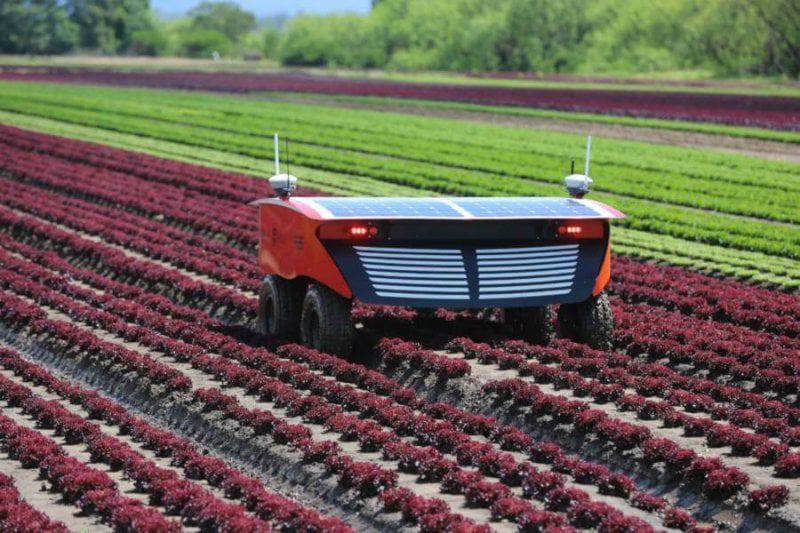Viewpoint: ‘Crops were in the fields, but folks were going hungry’: How Artificial Intelligence (AI) can optimize how produce gets from the farm to your plate
Viewpoint: ‘Crops were in the fields, but folks were going hungry’: How Artificial Intelligence (AI) can optimize how produce gets from the farm to your plate

“I can’t think of a better or more noble application of artificial intelligence than into the food supply chain,” says David Roberts, chief innovation officer of the Indiana Economic Development Corporation (IEDC). “It’s tragic that we had a situation where crops were in the fields, hogs were on farms and folks were going hungry during the pandemic.”
The pandemic-related supply chain crisis demonstrates the need for real-time connections between producers and consumers. AI’s potential to close those gaps in the food supply chain explains why agriculture’s AI market is projected to reach nearly $2.5 billion by 2026.
…
The power of AI to impact the food supply chain touches everything from soil to profits. AI and machine learning (ML) solutions can monitor and optimize irrigation, detect soil conditions, track crop development, evaluate and harvest traditionally hand-harvested crops, project future growing conditions and more. Taranis, a novel precision agriculture technology company, provides unparalleled leaf-level aerial surveillance—relying on AI to deliver granular insights to improve the effectiveness and efficiency of farm management and prevent crop yield loss.
Ultimately, adopting AI could ultimately help farmers add efficiency and agility to their businesses, while consumers could enjoy increased inventory, food safety and transparency about the origins, compositions and quality of the food on their plates.
Read the original post
 | Videos | More... |

Video: Nuclear energy will destroy us? Global warming is an existential threat? Chemicals are massacring bees? Donate to the Green Industrial Complex!
 | Bees & Pollinators | More... |

GLP podcast: Science journalism is a mess. Here’s how to fix it

Mosquito massacre: Can we safely tackle malaria with a CRISPR gene drive?

Are we facing an ‘Insect Apocalypse’ caused by ‘intensive, industrial’ farming and agricultural chemicals? The media say yes; Science says ‘no’
 | Infographics | More... |

Infographic: Global regulatory and health research agencies on whether glyphosate causes cancer
 | GMO FAQs | More... |

Why is there controversy over GMO foods but not GMO drugs?

How are GMOs labeled around the world?

How does genetic engineering differ from conventional breeding?
 | GLP Profiles | More... |

Alex Jones: Right-wing conspiracy theorist stokes fear of GMOs, pesticides to sell ‘health supplements’





 Trust issues: What happens when therapists use ChatGPT?
Trust issues: What happens when therapists use ChatGPT? Fighting deforestation with CO2: Biotechnology breakthrough creates sustainable palm oil alternative for cosmetics
Fighting deforestation with CO2: Biotechnology breakthrough creates sustainable palm oil alternative for cosmetics California, Washington, Oregon forge immunization alliance to safeguard vaccine access against federal undermining
California, Washington, Oregon forge immunization alliance to safeguard vaccine access against federal undermining Viewpoint — Fact checking MAHA mythmakers: How wellness influencers and RFK, Jr. undermine American science and health
Viewpoint — Fact checking MAHA mythmakers: How wellness influencers and RFK, Jr. undermine American science and health 30-year-old tomato line shows genetic resistance to devastating virus
30-year-old tomato line shows genetic resistance to devastating virus Viewpoint: Video — Big Solar is gobbling up productive agricultural land and hurting farmers yet providing little energy or sustainabilty gains
Viewpoint: Video — Big Solar is gobbling up productive agricultural land and hurting farmers yet providing little energy or sustainabilty gains The free-range chicken dilemma: Better for birds, but with substantial costs
The free-range chicken dilemma: Better for birds, but with substantial costs ‘You have to treat the brain first’: Rethinking chronic pain with Sanjay Gupta
‘You have to treat the brain first’: Rethinking chronic pain with Sanjay Gupta
